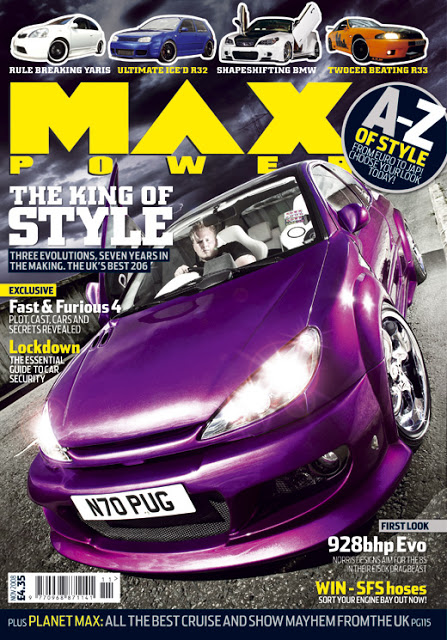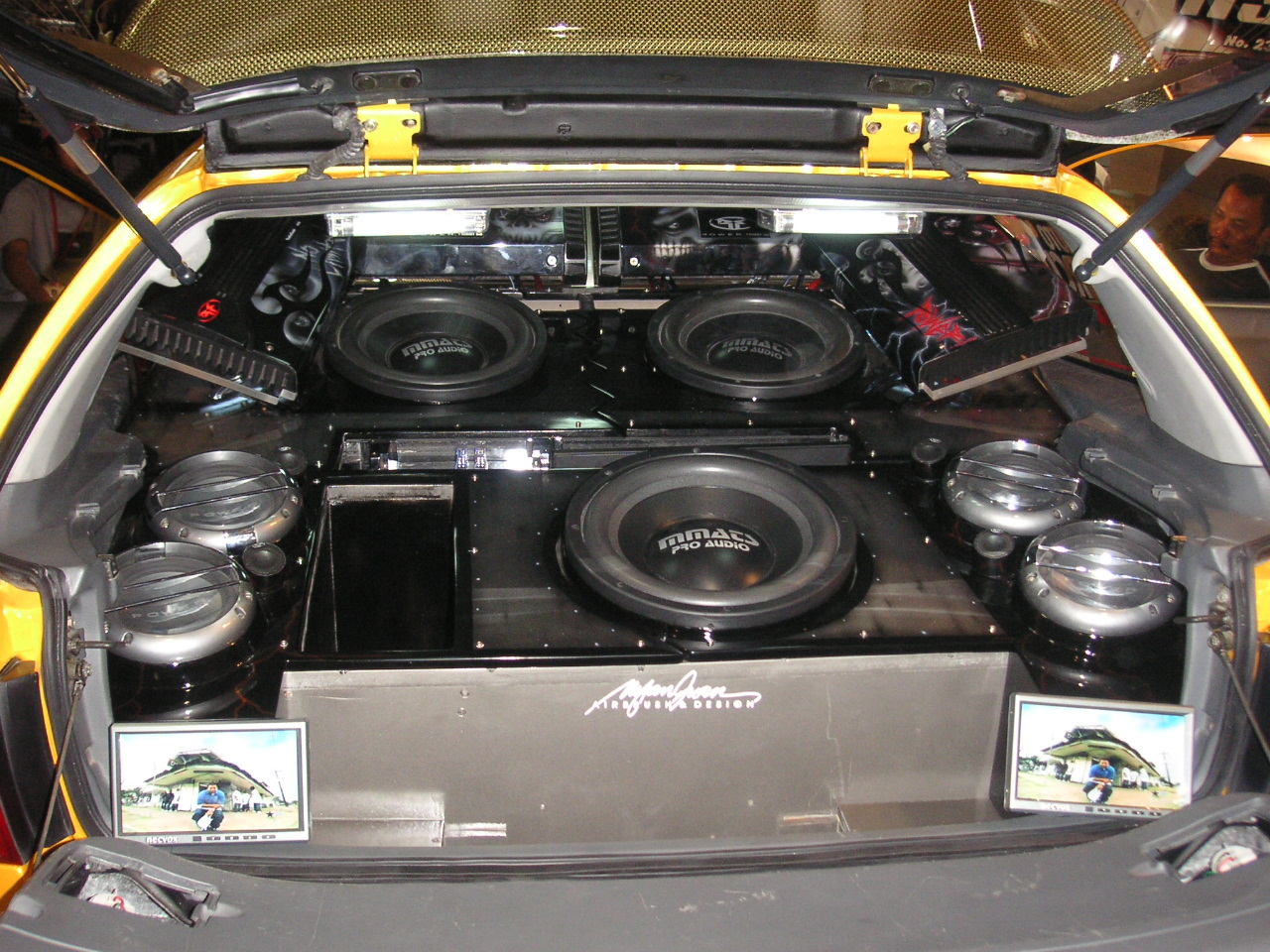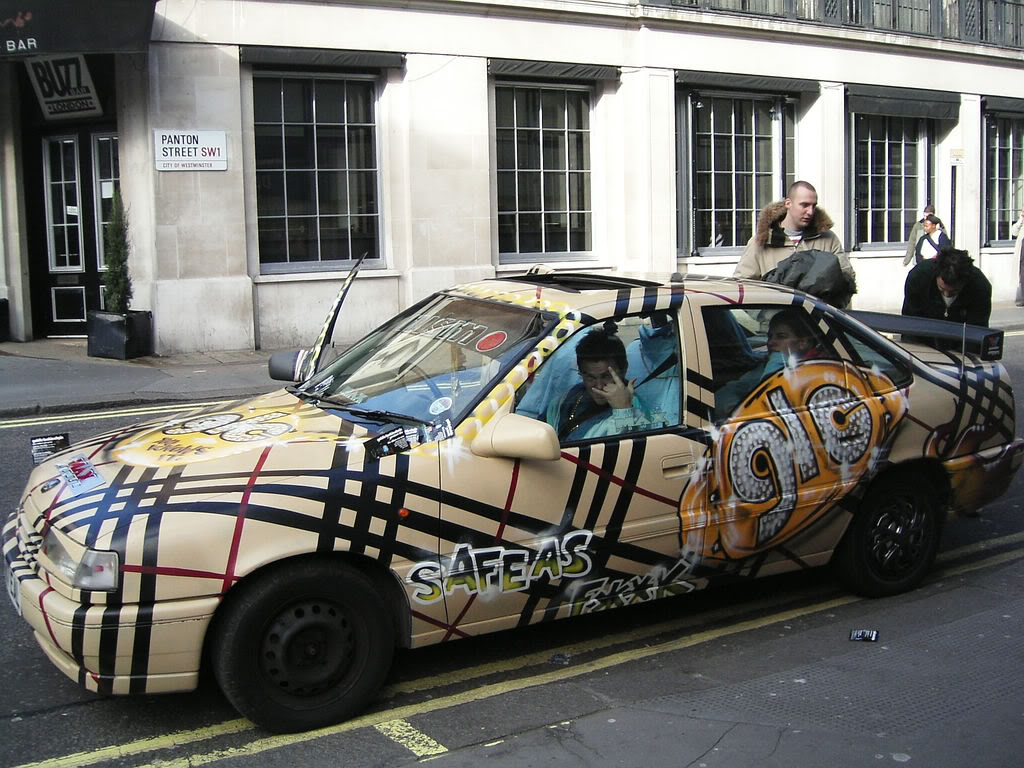"Whatever happened to the likely lads? Meet the Citroen Saxo. You know, the Max Power generation? The Red Line Magazine monkeys. The boys and girls tinkering and tweaking and representing down in the car park of your local rec; lapping "
The Max Power Generation or…Whatever Happened to The Likely Lads?
ex Max Power staffer Gary Inman on the rise and fall of a vibrant UK Car Cult...
To those not embedded within the Max Power culture, its passing would hardly raise a ‘meh’, but this was a multi-million pound business with a dozen or more magazines feeding it, the largest of which was selling a quarter of a million copies per month.
Hundreds of companies serviced the desires of rabid consumers. The culture was lampooned on mainstream TV by Sacha Baron Cohen’s career-launching Streatham Lad. And now it isn’t, and it’s not easy to pinpoint why it has vanished into a puff exhaust smoke.

For a couple of years, as features editor of Max Power, I was in the middle of it. This was a time when a £3500 donor hatchback could easily have £20,000 spent on it. Corsas, Novas, AXs, Saxos, Renault 5 Turbos, Golfs, 205s, 306s, Polos, Escorts, Fiestas. The mundane obsessively, sometimes unsuccessfully, turned into speedbump-avoiding expressions of their young owner’s peacockery.
This was also a time before the world went retro and became a homogenised melted vanilla mush lit by the unblinking glow of an iPhone. The Max lads were a national tribe, instantly recognisable, not by their JD Sports attire, but by what they chose to acquire mountains of debt to drive. And they supplied their own soundtrack: the thudding bass of Ministry of Sound collections, the wastegate whistle and dump valve shoosh, the backfire pop of a 1.6-litre French hatch being foie gras force-fed more fuel than an F-14 Tomcat guzzles.

The defining ingredients of this oft-maligned car sub(woofer)-culture are exactly the same as 1950s Californian hot rodding, but played out in post-Thatcher urban Britain and viewed down the nose of most non-participants.
In post-war California optimism, rabid expansion and a consumer-led manufacturing boom, coupled with the trickle down of a massive boom in car sales fuelled the original car culture. In the mid-late 1990s Britain, credit was readily available, car insurance not astronomical, new car-based technology affordable. As a nation we were giddily enjoying the highs of an all-too-brief boom time.
There were other similarities. Both cultures, though split by more than 40 years and 8000 miles, was street level, not driven by corporations (though they’d latch on). It was working and middle-class men doing what they chose to solely to impress peers. If the cars helped drivers draw potential partners (and if I weren’t so damn brow-beaten into being politically correct I’d just say women, because Max culture was ravenously heterosexual) to empty trading estate car parks for nothing more than the promise of a McFlurry and countless leering up and down looks, then all the better. But that wasn’t the main reason. Individuality – the kind of mass individuality that regular lads want – was what it was all about.

While the hot rodders used any and all available technology to make their cars faster, the Max crowd embraced technology too, rather than waiting to be fed it by car manufacturers. The main magazines, Fast Car and Max Power, employed ICE editors, In-Car Entertainment specialists, to keep abreast of the endless releases of new tech. £5000 ‘installs’ were so common place they wouldn’t raise an eyebrow. An Astra could end up with more TV screens than a bookies, routinely showing the modifiers favourite film, The Matrix. Fit a PlayStation, like so many did, and there was one less reason to go back to your parent’s house.
Max Power continued to grow long after I left. The cruise culture, where a region’s modified car owners would occupy a car park and hang out, do a few burn-outs, and double the local McDonald’s monthly takings in a night, grew and grew. So, what happened? Young men didn’t go off cars, that’s for damn sure.

An obvious answer would be fashion. This overtly ostentatious representation – loud paint, loud exhaust, loud bass, was inextricably linked with the kind of lads people were now calling chavs. This is not the place to launch into a treatise on the demonisation of the working classes, but no one wants to proudly debut their car down their local High Street only to hear calls of, Oi, Ali G, nice car!, followed by a soul-destroying forced laugh. When even Max Power painted a Vauxhall saloon in Burberry’s house check and renamed it the Chavalier, it seemed that the bible was even mocking the faithful. Perhaps no one thinks of themselves of a chav, but these lads weren’t stupid.

Others, who were there in the modified car heyday, mention the current youth’s obsession with gaining a body like Cristiano Ronaldo’s as a new outlet for their hormonal overload. And no one is going to compare you to Ali G with one of those.
There are still stalwarts modifying cars, but it’s far more fragmented, tiny in comparison, an older scene and not more restrained, but certainly more tasteful. And whatever the reasons, I’m not losing sleep over the extinction of the Max Power lad, but I’m sad that no motor culture seems to have filled the void.
British roads are so much less interesting without a fossil-burning cult pushing the boundaries of taste and legality.
CLICK TO ENLARGE










It is quite simple, actually.
Vehicles became tamper-proof in the late ’90s with the introduction of immobilisers, ECUs, emissions regulations etc.
In the ’90s it was possible to take “analogue” vehicles and push the performance up. With a vehicle made in the mid to late ’90s, that sort of modification cannot be done.
This is why in the USA people hot-rod cars from the ’70s.
Same with the European hatchback lot, they will still be modding mk1 golf.
The new frontier of automotive DIY is electric vehicles, combining composite materials and high tech batteries to produce mechanically simple performance vehicles.
Not quite. It is just as possible today to swap an ECU for an independent ‘tuneable’ one, as it was back then to fit carbs. In fact more power can be gained these days without having to go ‘old school’!
One of the main reasons the Max Power era ended was due to people growing up, getting married, mortgage and kids etc.
There are still many people who modify cars (and motor bikes), but they are more understated and not as easily noticed like before.
One of the benefits to emerge from the Max Power era was the quality of engineers it produced.
I agree with you, Elon Musk has seen to that but it is boring without a soundtrack! No soul 🙁
Sent from my Samsung device
——– Original message ——–
It’s easy what killed it was police being heavy handed and scared of huge groups of people not sat at home watching tv and insurance companies taking the piss along with a constant fun ban country that is against all who like to have fun. It’s dead in the water and will continue to die out unless we take the approach of biker clubs and say fuck the law and police we ain’t taking it anymore.
Nobody will so RIP the car scene our generation are the last real car enthusiasts because none of us will stand up to the powers that be.
I think what killed it was simply the recession, less spare money for people to spend on exhausts, subs, and more importantly, petrol. As the country ying yanged between labour and the tories, creating debt and austerity, and more importantly labour sending us to war… (lots of modified car owners I knew were in the Army etc), + the police clamping down and EU creating laws (belgium is hugely against modified cars and Brussels rule us) it is easy to see why it died.
Plus on top of that, the silly scrappage scheme that saw gems like e39 M5’s get scrapped for a 1.0 VW Up replacement….
And it is such a shame that it did.